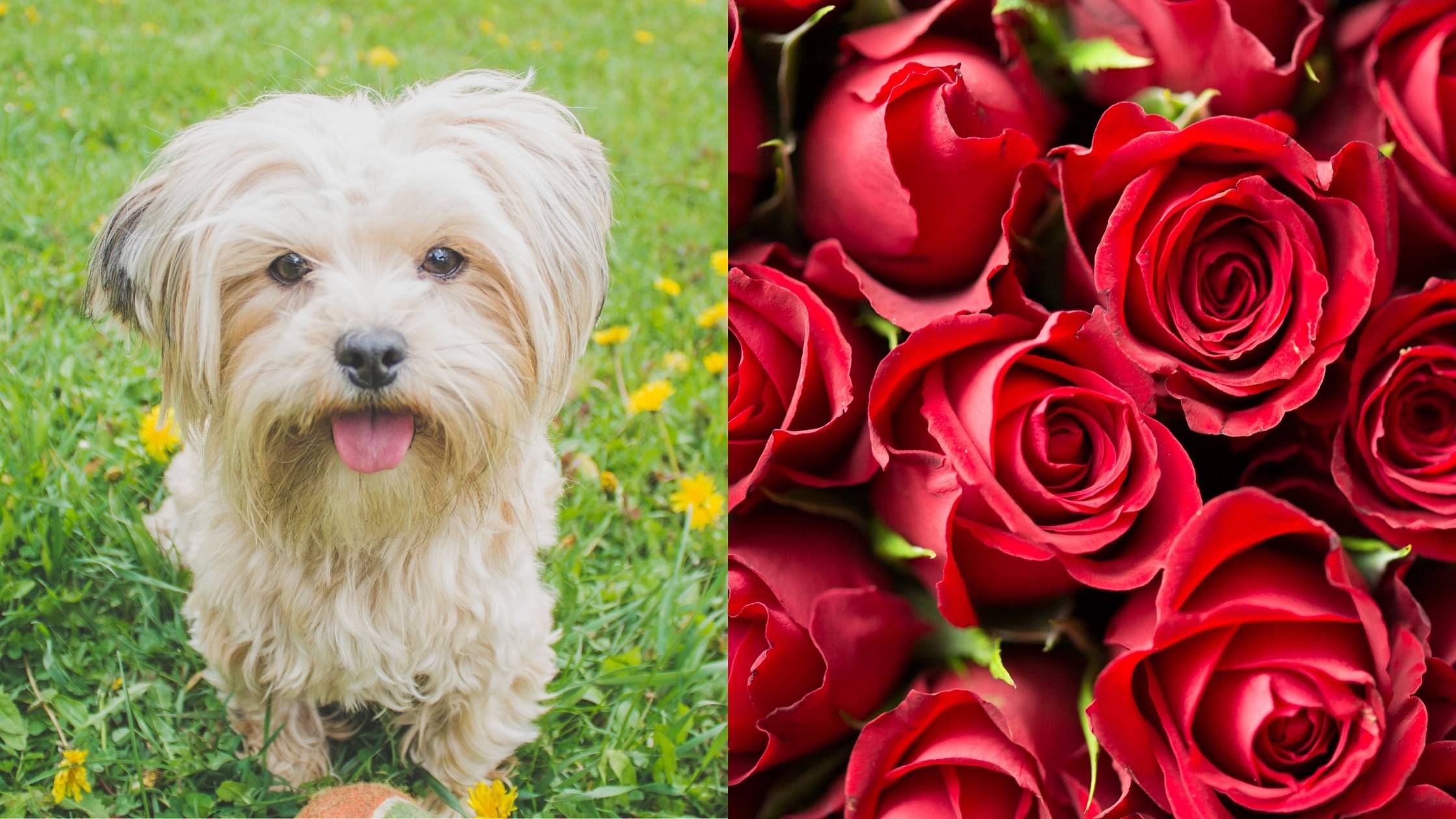Last Updated on 11/17/2021 by Veronica Jones
Are you constantly worried that your dog will eat something he shouldn’t on your daily walks? Whilst this comes with being a responsible dog owner, it helps to have some knowledge on what is pet safe and what could cause harm to your furry friend.
Roses are a popular and attractive choice of flowering plant for gardens, walkways and communal areas. Bloom cycles usually happen between March and June, however late blooms can happen through to October. The rose plant is probably most known for being armed with sharp prickles. Some humans even sprinkle rose petals on top of a salad for a garnish.
Can dogs eat rose petals? Are roses toxic to canines? Let’s find out what will happen if your curious pooch gobbles up a petal or two.
Can dogs eat rose petals or rose bushes?
The good news is that no part of true roses are toxic to dogs, including the petals. Eating rose blossoms will not cause your furry friend any significant harm if he decides to snack on a few. Excessive consumption of rose petals could make your pup poorly though. Be mindful of plants that look like roses and have rose in their name, but are actually toxic to pets.
As a dog owner, you also need to be aware of potentially dangerous weed killers, pesticides and chemicals some rose bushes may be treated with. Rose plants are not a healthy food choice for canines and the sharp thorns can cause damage to a dog’s mouth or eyes. There are also some flowering plants grown in the agriculture plant hardiness zones that have “rose” in their name yet are not true roses and could be toxic to animals. Disulfoton is sometimes used in rose granule products and can be deadly to dogs and cats.
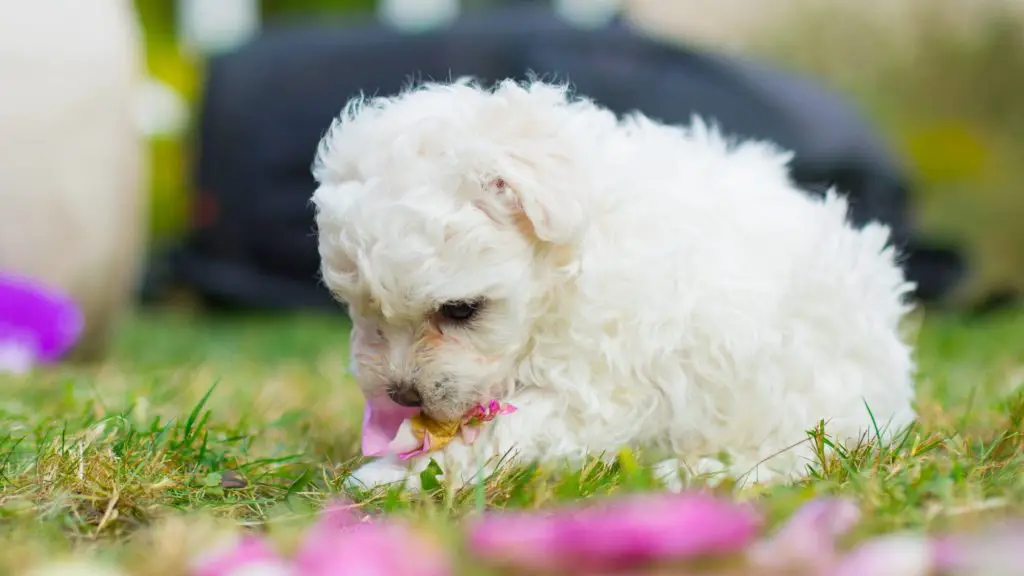
Why do dogs like a rose bush and rose petals?
Roses are perfectly safe flowers and have a strong and unique aroma, which can tempt your dog to take a bite. Some dogs may accidentally gobble up fallen rose petals that have been mixed in with grass. The main reason your dog will want to have a taste of a rose petal is curiosity.
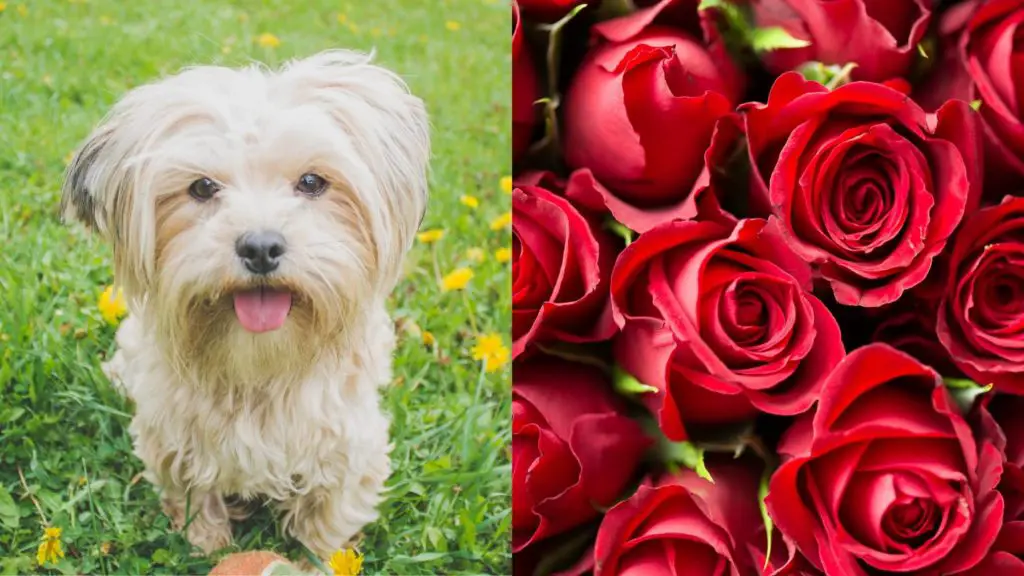
What happens when a dog eats a rose petal?
Are roses poisonous if eaten by a pup? If your dog eats a few leaves or petals from a rose plant, he will probably be ok. Too many petals or leaves could give your pooch a poorly tummy.
You shouldn’t allow your four-legged friend to eat too many rose petals and should contact your vet immediately if your dog shows any of the following symptoms:
• Excessive diarrhea or vomiting.
• Rubbing or licking a particular area. This could be a sign that your dog is in distress from a thorn wound.
• A severe, bleeding mouth wound. Blood loss from the mouth or tongue can be fatal in dogs and should be treated as an emergency.
• Eye damage from dried rose thorns. Untreated eye wounds can result in the loss of sight and sometimes even a dog’s eye. Watch out for signs of redness, squinting, light sensitivity and rapid blinking which may indicate a scratched eye.
A vet will be able to stop bleeding from a wound, clean it and close them with stitches or staples. If your dog eats rose petals from a bush that has been treated with chemicals, monitor your dog closely. In most cases your pooch will experience a poorly tummy, however if you’re concerned your vet can give you advice. When speaking to your veterinarian, try to give as much detail as possible including how much rose was eaten, whether thorns were consumed and if the area has recently been treated with chemicals.
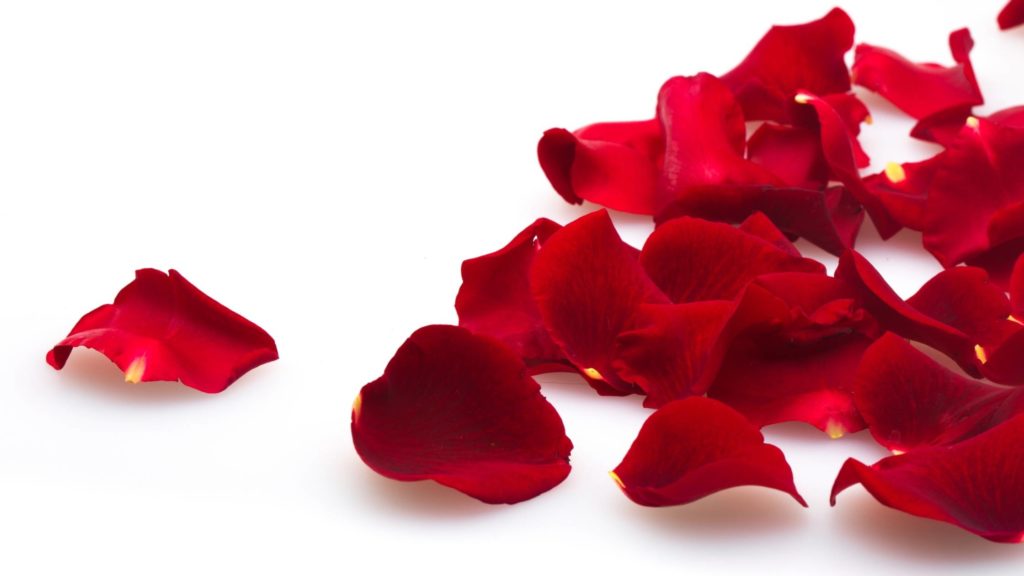
Watch out for the rose thorns
Jagged thorns on rose bushes can stick out, making them a hazard for dogs that like to explore the borders of your garden. These sharp prickles can get stuck in a dog’s paw pad or cause deep cuts to a dog’s sensitive eye area. When pruning your rose bushes, it’s a good idea to pick up all of the cuttings to prevent your pooch from stepping on them and getting hurt.
Cinderella Rose and Kathleen Harrop are pet-safe varieties of rose plants that are spike-free and a better option to have in a garden with animals. It’s also a good idea to train your dog to stay away from rose petals and other plants to keep him safe.
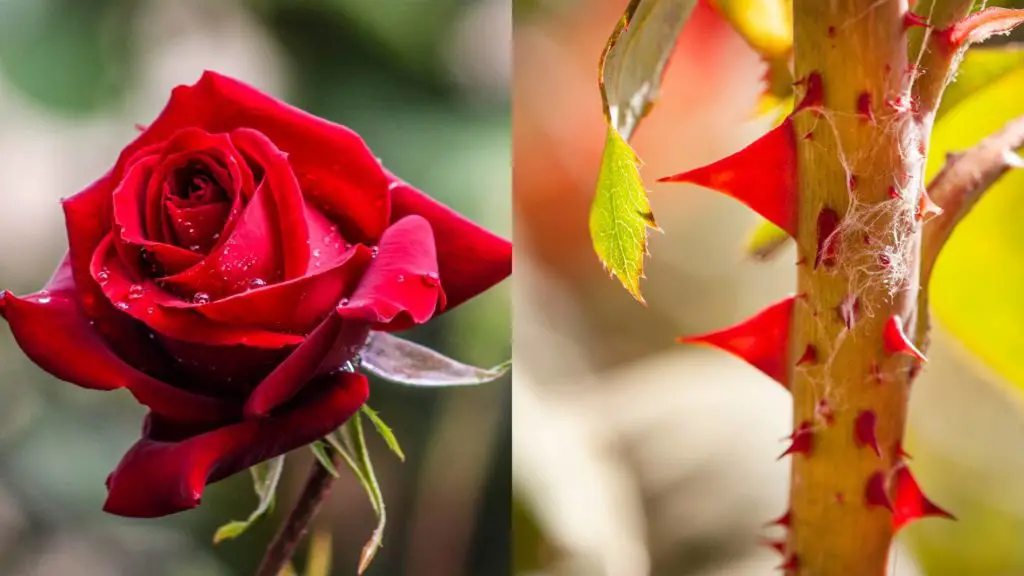
Are flower petals poisonous to dogs?
Unlike roses, some plants are highly toxic to dogs and should be kept away from your pet.
Lilies: ingesting just a few petals from a lily by a dog or cat can lead to kidney failure.
Azalea: even if a small part of the azalea flower can cause sickness, diarrhea and drooling if consumed by a dog. In severe cases, dogs may experience breathing difficulties and even suffer from a coma.
Tulips: the bulb of this popular flower contains a poisonous substance that is highly toxic to dogs. If your pooch consumes a tulip bulb, he may experience diarrhea, vomiting, excessive drooling and a lack of appetite.
Daffodils: this bright springtime flower also contains a dangerous substance that could even cause cardiac arrhythmia in dogs, an irregular heartbeat.
Crocus: spring crocuses can cause mild tummy upsets and vomiting, however autumn crocuses can have more serious consequences if ingested by dogs.
Oleander: commonly found in backyards and gardens in the US, Oleander is one of the most deadly plants to animals. If ingested, this flower can cause an increased heart rate and stomach upset that will need immediate medical attention.
If your dog eats any poisonous flower, you should take an emergency trip to your vet.
Dogs and rose petals
Rose flowers are non-toxic to pets, making them a great choice of plant for your backyard. However, be mindful of the types of products you use on your rose plant and keep your dog away from the harmful thorns to prevent injury.
Looking for More Great Articles About What Your Dog Can (or Can’t) Eat?
- Can Dogs Eat Steak Fat? Is it Unhealthy?
- Can Dogs Eat Lunch Meat (Deli Meat)? Is it Harmful?
- Can Dogs Eat Sugar Cookies? Are they Safe for Dogs?
- Can Dogs Eat Plantain Chips? Everything You Need to Know
Reference list
- Dogs trust “poisonous substances to dogs” https://www.dogstrust.org.uk/help-advice/factsheets-downloads/factsheetpoisonoussubstances09.pdf Accessed 13th October 2021
- PDSA “first aid for dogs” https://www.pdsa.org.uk/pet-help-and-advice/pet-health-hub/medications/first-aid-for-cuts-and-grazes Accessed 13th October 2021
- ASPCA “toxic and non toxic plants to dogs” https://www.aspca.org/pet-care/animal-poison-control/toxic-and-non-toxic-plants Accessed 13th October 2021

